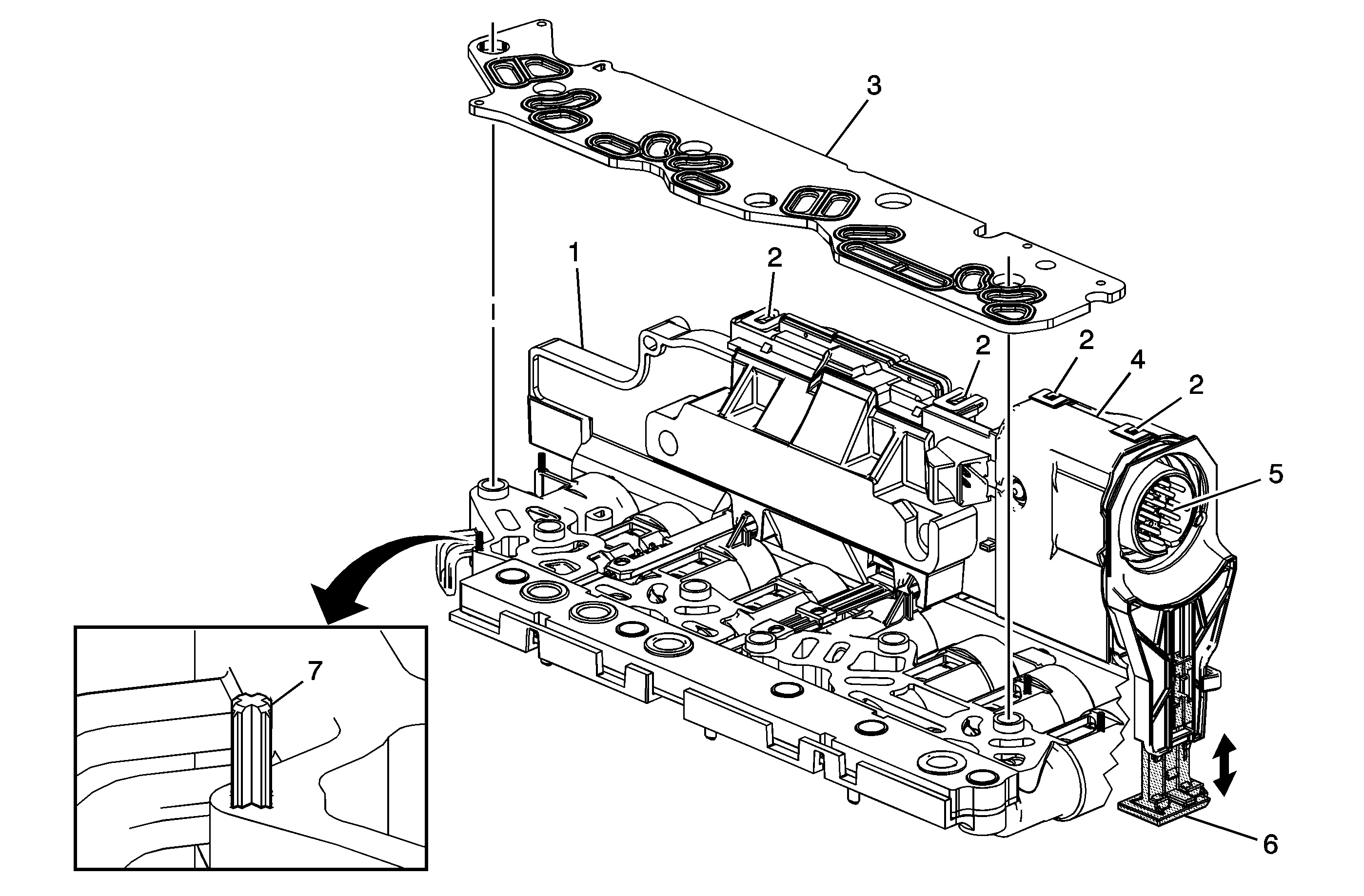During transmission manufacturing and assembly, small pieces of material may become dislodged. This may also happen after the transmission has been in operation for a period of time. Because the transmission control solenoid (w/body and TCM) valve assembly is continually immersed in transmission oil, material particles or slivers of metallic debris may become deposited on the control solenoid (w/body and TCM) valve assembly. Often this material is very small and can be hard to see. For this reason, it is important that the control solenoid (w/body and TCM) valve assembly be thoroughly inspected.
A thorough inspection of the control solenoid (w/body and TCM) valve assembly should include the following:
| • | Clean inspection area - Like all transmission service work, cleanliness is very important. Be sure the area where you are inspecting is free of dust and dirt. Have non-glossy white or lightly colored paper down on the inspection surface. This will enhance the lighting and help to see particles that have come from the control solenoid (w/body and TCM) valve assembly. |
| • | Lighting - Good lighting is necessary for a thorough inspection. If shop lighting is limited, use natural light. A second source of lighting, such as a penlight, is helpful for close examination. A magnifying glass can also be helpful to see into difficult places. |
| • | Cleaning - Clean shop air may be used for spot cleaning as long as the debris can be removed with out it becoming lodged somewhere else. It is best to rinse or flush particles away with GM Brake Parts Cleaner. Do not use a cloth rag to wipe the control solenoid (w/body and TCM) valve assembly, as it could leave lint behind. |
Control Solenoid (w/Body and TCM) Valve Assembly Housing and Filter Plate

- Inspect the control solenoid (w/body and TCM) valve assembly housing (1) for damage, cracks, or parting seam (4) separation. Inspect all housing lock tabs (2). Any defect will need to be evaluated for critical operation. Ensure all screws along the control solenoid (w/body and TCM) valve assembly housing are present. Remove and closely examine the filter plate assembly (3) for sediment or debris attached to the screen. If sediment or debris is found on the filter screen, be sure to inspect the solenoid supply or control ports that correspond to location of the debris on the filter plate screen. Inspect the filter plate gasket for proper sealing. If poor sealing is found, be sure to inspect the affected solenoid fluid port entrance and exit for sediment or debris deposits. Thoroughly flush the solenoid cavity with GM Brake Parts Cleaner and replace the filter plate assembly (3). It is not necessary to remove all clutch plate soot from the entire surface of the control solenoid (w/body and TCM) valve assembly housing. Inspect the control solenoid (w/body and TCM) valve assembly filter plate retaining tabs (7). Broken or missing tabs do not require the control solenoid (w/body and TCM) valve assembly be replaced. The filter plate can still be adequately aligned using the bolt hole sleeves. Early design control solenoid (w/body and TCM) valve assembly use four filter plate retaining tabs (7).
- Examine the 16-way connector (5) cavity for material that could make contact between the electrical pins. Also, look for bent or loose connector pins and ensure the connector lock (6) is functioning and is in good condition.
Important: At the end of the inspection process where debris is found, it is required the transmission fluid and filter be replaced. Any time the control solenoid (w/body and TCM) valve assembly has been removed, it is mandatory the filter plate assembly (3) be replaced.
Control Solenoid (w/Body and TCM) Valve Assembly Inspection -- Solenoids, Sensors, and Contacts

